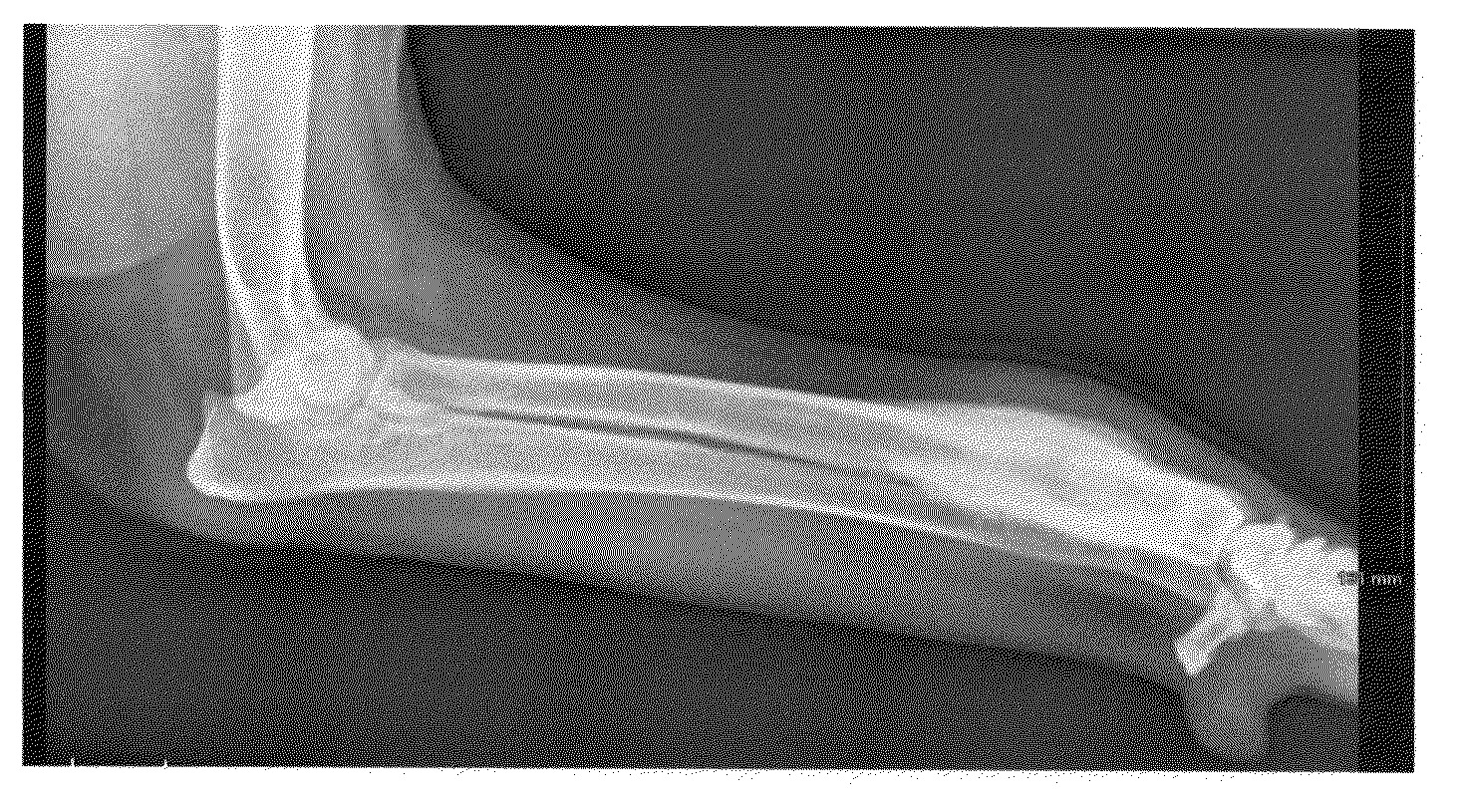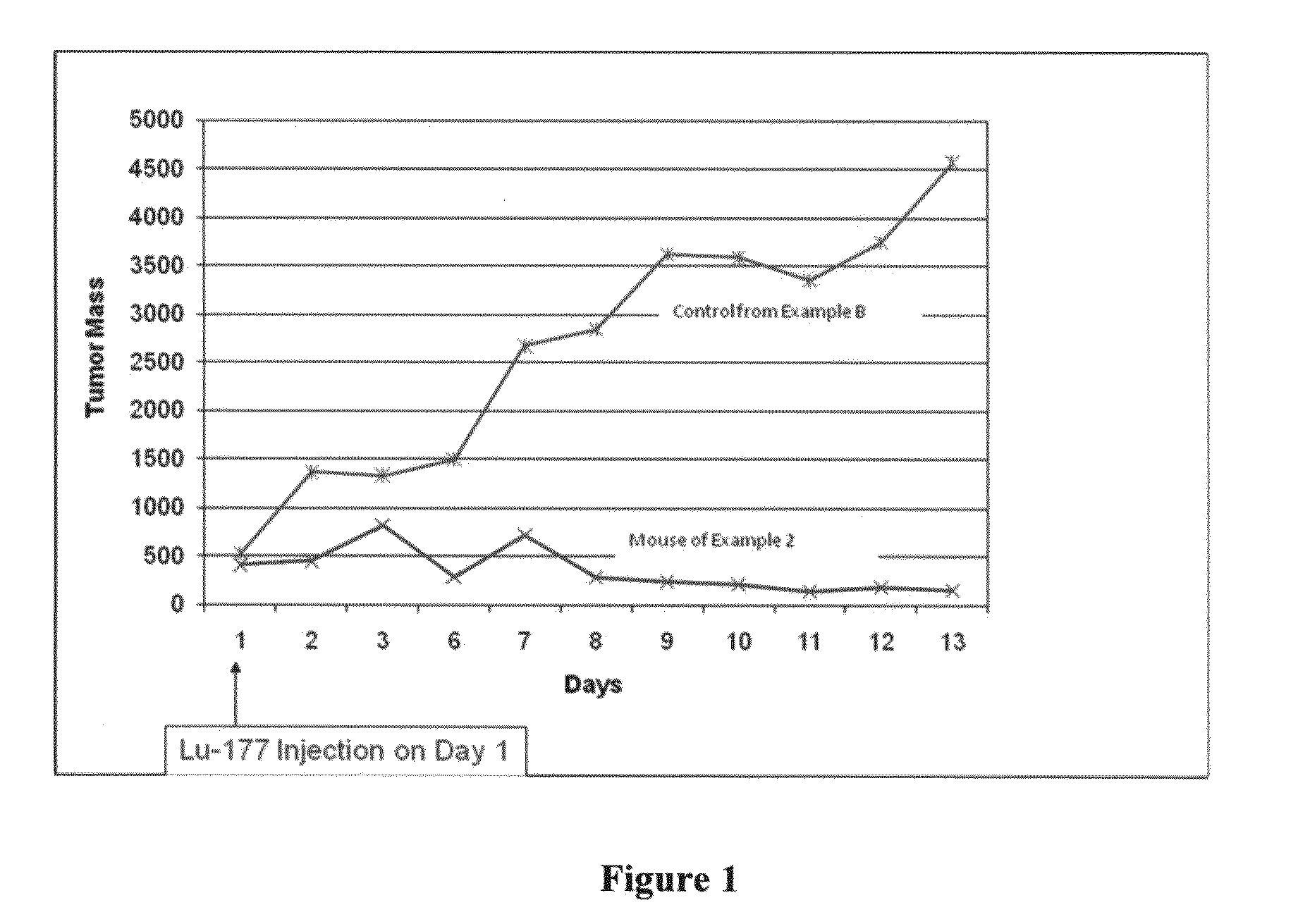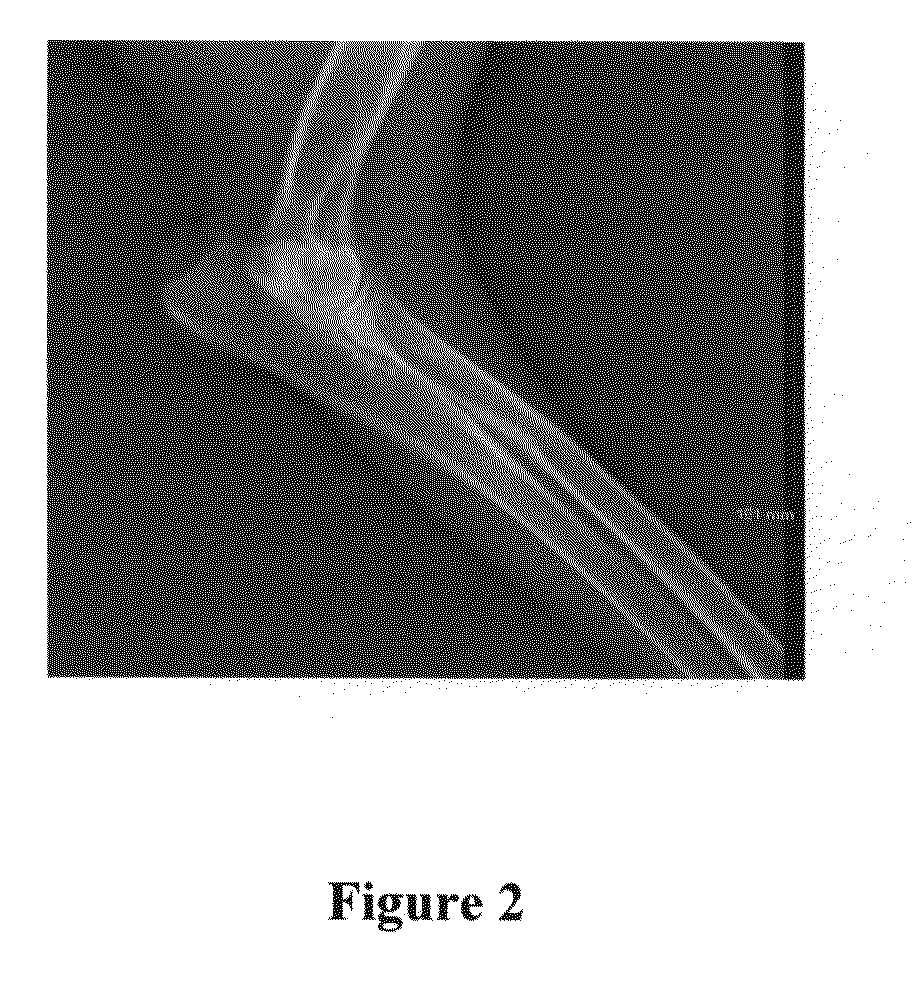Compositions and methods for treatment of tumors by direct administration of a radioisotope
a radioisotope and tumor technology, applied in the direction of drug compositions, dispersed delivery, therapy, etc., can solve the problems of increasing the amount of narcotics needed by patients to control pain, significant decrease in patient's quality of life, and difficult treatment, so as to achieve a better treatment approach.
- Summary
- Abstract
- Description
- Claims
- Application Information
AI Technical Summary
Benefits of technology
Problems solved by technology
Method used
Image
Examples
example 1
High pH Lu-177 Composition
[0057]A composition produced at high pH was prepared by adding of 2.0 μL of 50% w / w NaOH to 10 μL of a Lu-177 solution (obtained from MURR, 1.09 Ci / mL in 0.05 M HCl) followed by the addition of 8.0 μL of water. The mixture was allowed to stand for 30 minutes prior to injection. The pH of the composition was greater than about 10.
example a (comparative)
Low pH Lu-177 Solution
[0058]A solution of Lu-177 in 0.05 M HCl was obtained from MURR containing about 1.09 Ci / mL. The injectate was prepared by mixing equal volumes of the Lu-177 solution and 0.05 M HCl. The pH was less than about 2.
example 2
In Vivo Xenograft Test High pH Lu-177
[0059]An athymic mouse bearing an HT-29 xenograft was anesthetized and 2-3 μL of the composition of Example 1 was diluted with about 20 μL of water and administered directly into the tumor. Multiple injections were made at several different sites around the periphery of the tumor as well as directly into the tumor mass. The amount of injected activity was determined to be 0.924 mCi Lu-177. Gamma camera images 13 days post-treatment showed the majority of the activity remaining at the injection site. Less than 1 μCi of the Lu-177 was found in the urine or feces on any of the 13 days post-injection. The size of the tumor was measured and compared to a similar mouse injected with saline as a control. The tumor in the saline control mouse increased in size while the tumor in the mouse of this Example 2 decreased in size. These results are shown in Table 1 below and graphically in FIG. 1.
TABLE 1Tumor size in cubic millimeters for treated and control m...
PUM
 Login to View More
Login to View More Abstract
Description
Claims
Application Information
 Login to View More
Login to View More - R&D
- Intellectual Property
- Life Sciences
- Materials
- Tech Scout
- Unparalleled Data Quality
- Higher Quality Content
- 60% Fewer Hallucinations
Browse by: Latest US Patents, China's latest patents, Technical Efficacy Thesaurus, Application Domain, Technology Topic, Popular Technical Reports.
© 2025 PatSnap. All rights reserved.Legal|Privacy policy|Modern Slavery Act Transparency Statement|Sitemap|About US| Contact US: help@patsnap.com



